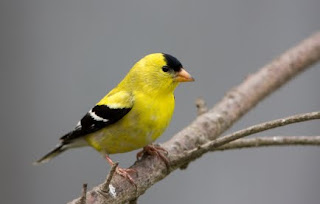
Now that we have finally gotten into the fields to harvest here in Southern Alberta, we hope that fall will last a long time and that winter is a long way off. There is no doubt however that it certainly is fall, with the crisper nights and the already shortening days. Soon we will see large flocks of birds migrating south for the winter.
Migration is an amazing sight, particularly when you are driving across the prairies in the fall. Often times you can see many flocks of all sorts of different birds flying overhead. The flocks that seem most common to us here on the farm are the snow geese that travel in very large flocks through the area in the fall and spring. We are definitely on their migratory path.
When you see these flocks in the air, you can't help but wonder how do birds know when to migrate? The articles on this subject vary but many experts (source: Lincoln, Frederick C., Steven R. Peterson, and John L. Zimmerman. 1998. Migration of birds. U.S. Department of the Interior, U.S. Fish and Wildlife Service, Washington, D.C. Circular 16. 113pp.) believe that birds have a natural hormonal cycle. A change in the day length in the fall affects bird hormone levels causing birds to eat more and build up fat. These hormones also cause them to molt, thus ensuring that birds have fresh flight feathers for the migration journey. It also appears that the hormone level changes cause birds to become restless and ready to move on.
Some, but not all, birds will migrate at night. Many smaller birds do this and it is believed that this is to avoid enemies and secondly to allow the birds to feed during the day when more food is available to them.
So how do birds know where to go? It appears that this varies from bird species to bird species. However, in general, birds who only migrate short distances seem to learn the route from other more experienced birds, while birds that travel long distances seem to have an innate ability to determine where they need to migrate to. Studies show that some birds appear to navigate according to stars. However, some birds will travel even on a cloudy night so the earth's magnetic fields, the location of the setting sun, topographic features of the landscape (coastlines, rivers, mountain ranges, for example),and prevailing wind patterns are all possibly used as cues for migration.
So what does migration mean for backyard bird feeders? Well during the seasons of spring and fall you may see birds in your yard that you do not regularly see. These weary travellers will likely be looking for a well-stocked feeder or fresh water to help them make it through the next phase of their journey.








